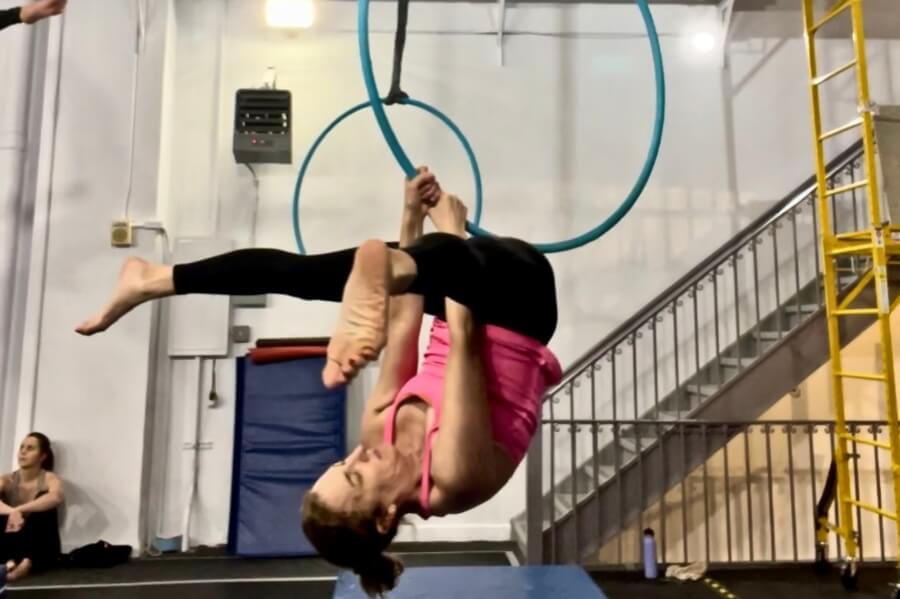When I watched the movie Wine Country, Amy Poehler’s character hit really close to home. The film is about a group of 50-something friends traveling to Napa Valley, but that’s not why it resonated so strongly with me. Amy Poehler’s character, Abby, straps on a mask every night before going to sleep. It covers her whole face and has a long tube coming out the front. She looks like a fighter pilot about to hit some G-forces, or an elephantine robot.
Women often share rooms on our trips, either with friends or with other travelers. Pro tip: pack earplugs, or if you’re the culprit, bring nose strips!
The apparatus is actually a continuous positive airway pressure (CPAP) machine, and the movie surely marks the first time that this anti-snoring device has been used as a comedy prop. Poehler, who wrote the Wine Country script, actually uses a CPAP in real life and says it has changed her life.
But while her snoring issue was played for laughs, snoring isn’t very funny for you or anybody sleeping with you—not even your cat.
Snoring can have many causes and many solutions. Approximately 90 million American adults snore—37 million on a regular basis, according to the National Sleep Foundation. While more common in men, snoring affects many women, especially as we get older.
That would include me.
The End of Silent Slumber

Remember when sleeping was peaceful? Image: Minnie Zhou/Unsplash
When I hit my mid-50s, my silent slumber disappeared to the dismay of my husband. I began snoring on a semi-regular basis—and snoring loudly. He can sometimes hear me snoring from the living room, several rooms away. On a recent trip, I was sharing a room with a friend, who woke me in the middle of the night because my snoring was keeping her awake.
My snoring had officially become a nuisance that I couldn’t ignore anymore—nor could those who slept anywhere near me. It was time for me to find out the cause and how to fix it.
I made an appointment with Dr. Daniel Slaughter of Sinus and Snoring Specialists, an Austin Ear, Nose, and Throat physician who has dedicated his practice to sinus and snoring issues.
Read More: Can’t Sleep … Like, Ever? Read How One Insomniac Tried Every Solution
The Anatomy of a Snore
First he gave me a detailed explanation of the anatomy of a snore.
My husband can sometimes hear me snoring from the living room, several rooms away.
When you sleep, the muscles of your throat relax, your tongue falls backward, and your throat becomes narrow and “floppy.” As you breathe, the walls of the throat begin to vibrate, generally when you breathe in, but also, to a lesser extent, when you breathe out. Snoring is resistance to airflow that creates vibration of the soft tissue and an associated noise. It can be soft and infrequent or very loud and disruptive, like mine. The narrower your airway becomes, the greater the vibration and the louder your snoring.
Sometimes the walls of the throat collapse completely so that it is completely closed, creating a condition called obstructive sleep apnea (OSA). This is a serious condition that requires medical attention. Amy Poehler was actually diagnosed with OSA after her snoring and sleep issues necessitated a trip to a doctor.
The Snore Score
Not all cases of snoring are caused by OSA. Some of the most common causes include:
- The normal aging process: As we age, our throat muscles may become more relaxed, which leads to snoring. Yep, another thing to add to the “Unwelcome Consequences of Aging” list.
- Nose and throat conditions: Certain physical ailments in the nose and throat can contribute to snoring. These may include a deviated septum (a condition that occurs when the wall that divides the nostrils is shifted to one side), nasal polyps (soft growths that line the insides of the sinuses), and enlarged tonsils or adenoids. Suffering from seasonal allergies or a nasty cold can also bring on a bout of snoring.
- Mouth breathing: Sleeping with an “open mouth creates rapid and turbulent airflow, causing the mobile jaw and tongue to fall back into the airway and hit the back of the throat,” according to the National Sleep Foundation.
- Sleep style: If you notice that you or your partner snores more when positioned on your back than when resting on your stomach or side, then you’re dealing with a case of “side dependent” snoring. The good news is that with practice, you can train yourself to sleep on your side or belly, which may reduce the likelihood of snoring.
- Alcohol consumption: Snoring can also be brought on by consuming too much alcohol before bedtime. Alcohol relaxes throat muscles and decreases your natural defenses against airway obstruction.
- Excessive weight: Too many pounds can be a risk factor for many health issues, and it’s also a contributor when it comes to snoring. Being overweight leads to poor muscle tone and increases the tissue around the neck and throat, two causes of nighttime noise.
Women Who Snore: Getting the Diagnosis
So what was the cause of my snoring?
Alcohol relaxes throat muscles and decreases your natural defenses against airway obstruction.
To get a diagnosis, Dr. Slaughter looked into my throat, examined my tongue, and conducted a high-definition nasal endoscopy (it was completely painless) and a mini CT scan.
I learned that my nasal septum is deviated to the right—the result of breaking my nose nearly a decade ago when I walked into a glass conference room window during a business meeting. (Definitely not one of my finest moments!) This was making it more difficult for my sinuses to drain, contributing to chronic sinus infections, which had caused my tongue to get bigger. (Who knew your tongue could grow?) That’s why I was snoring.
“When you force air flow through a narrow opening, it creates vibration,” Dr. Slaughter explained. “It’s like putting your thumb over a garden hose. The water comes out a lot faster and more turbulent.”
The Balloon Treatment
The solution to my issue would be for him to fix the root problem, addressing both my deviated septum and my sinus infections. He helped develop a procedure called Balloon Sinuplasty, a 15-minute in-office procedure done under IV sedation. A tiny sinus balloon is inserted into the natural sinus tracts and is inflated to dilate the area, which allows more effective draining. This procedure helps eliminate recurring sinus infections and, in the process, reduces snoring.
If I still snore after the procedure—because my tongue is too big—it can be managed by an oral appliance that pulls the jaw and tongue forward.
The bottom line: Snoring can be a serious health issue. And it can be fixed.
Sawing Logs For Science
Many doctors do a sleep study, also known as a polysomnogram. This is a noninvasive, procedure that usually requires spending a night or two in a sleep facility. A sleep technologist records multiple biological functions during sleep, such as brain-wave activity, eye movement, muscle tone, heart rhythm, and breathing via electrodes and monitors placed on the head, chest, and legs. After a full night’s sleep is recorded, the data is tabulated by a technologist and presented to a physician for interpretation.
Because snoring can be caused by multiple factors, it is best to see an ear, nose, and throat doctor to determine the best treatment. It may mean losing weight, having a sinus procedure, or reducing alcohol consumption before bed.
Or in the case of obstructive sleep apnea, it may require a CPAP machine—just like Poehler’s.
Read More: A Midsummer Night’s Sweat (Hot Flashes, Insomnia, and Other Kinds of Hell)
Signs of Obstructive Sleep Apnea
Snoring is a common part sleep for many people, and as annoying as it may be to those who hear it, there is nothing harmful about it on its own. In certain cases, though, snoring can indicate the presence Obstructive Sleep Apnea (OSA), a potentially serious sleep disorder. How can you tell the difference? Look for these signs the National Sleep Foundation gives to determine if someone’s noisy nighttime breathing warrants a trip to the doctor’s office.
1. Volume
While light sighs during sleep aren’t usually cause for concern, deeper and more audible snorts can be. Louder snores have a greater chance of being associated with OSA.
2. Consistency
Episodes of snoring that are interrupted by gasps, choking sounds, or irregular pauses in breathing may suggest something more serious is afoot.
Many people are occasional snorers, especially if they’re suffering from a cold or congestion—or anything that causes a temporary blockage of the airways. With an underlying condition like OSA, though, a person will snore nearly every night even when he or she is otherwise in good health.
3. Gasping and Trouble Breathing
Episodes of snoring that are interrupted by gasps, choking sounds, or irregular pauses in breathing may suggest something more serious is afoot. Telltale signs of OSA include snoring sessions that are punctuated by bouts of breathlessness.
4. Other Symptoms Accompany Snoring
For people with OSA, snoring doesn’t usually occur in a vacuum. Other symptoms of the condition, which is more common in middle-aged and older men, include nocturia (getting up to urinate in during the night), depression, irritability, and sexual dysfunction tied to the lack of restful sleep.
If you suspect your snoring—or a partner’s—is a symptom of sleep apnea, you should consult with a physician to schedule a sleep test and learn about available treatment options.
A version of this story was originally published on June 8, 2019.





















0 Comments